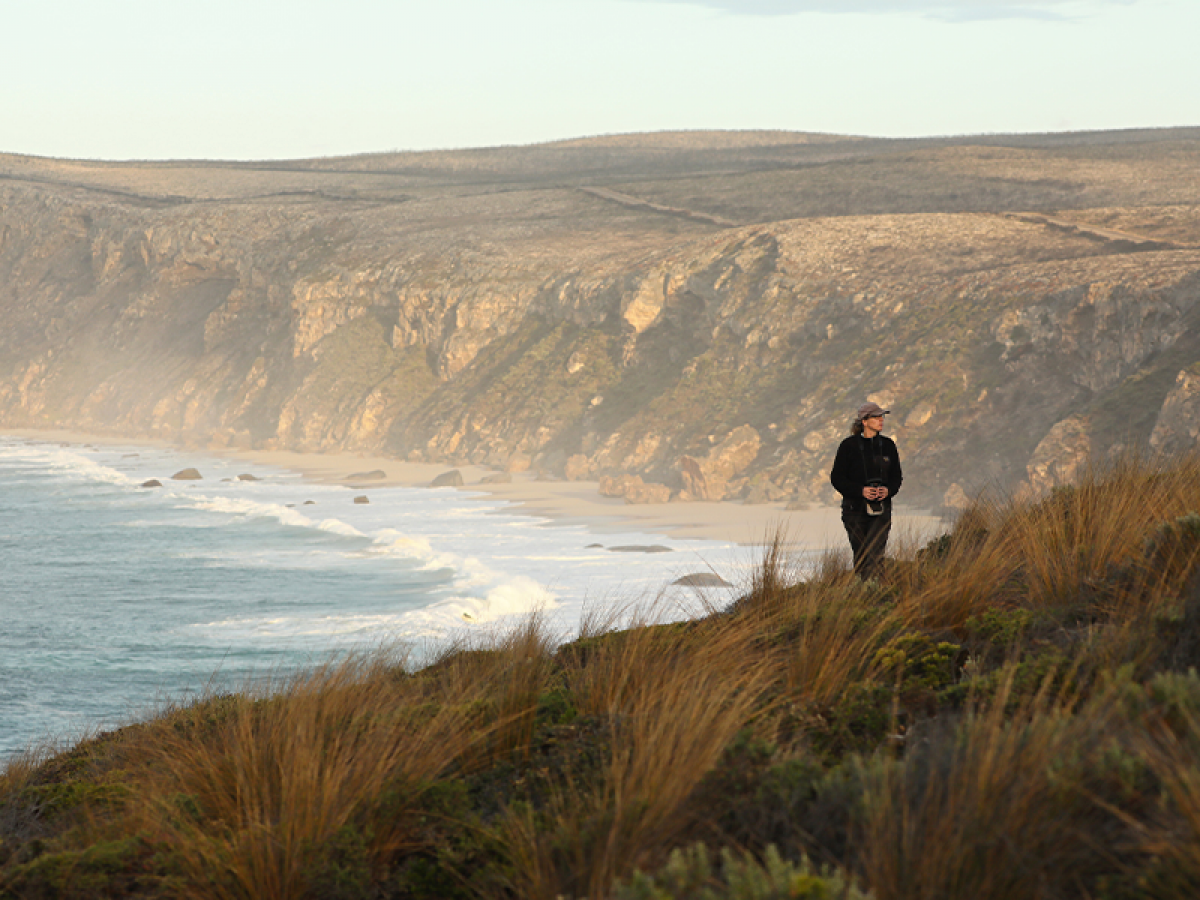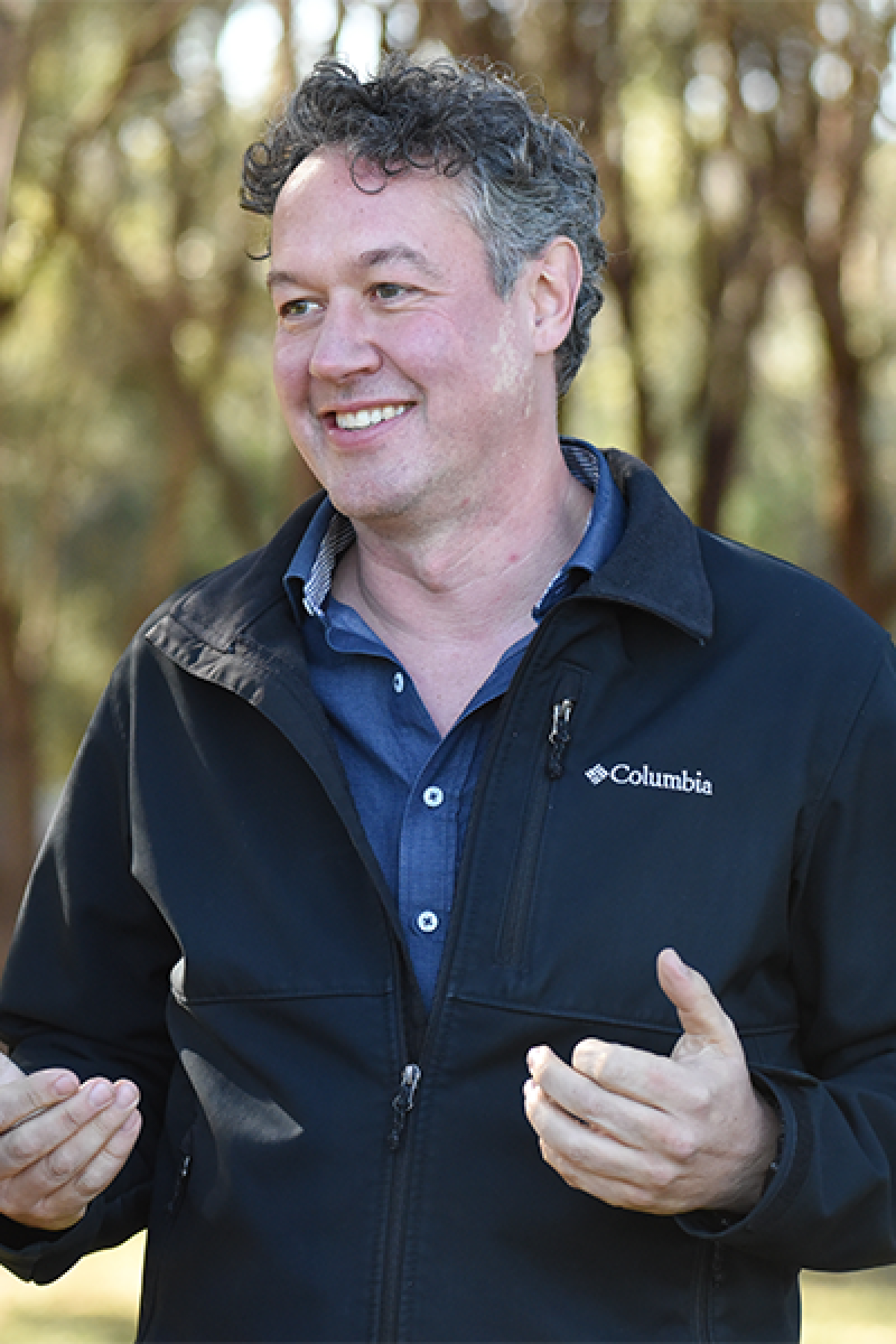Environment report card – failing our planet

Bird surveys Kangaroo Island - Tom Hunt
Professor Andy Lowe, Interim Director, Environment Institute, gives his sobering overview of the state of the planet.
With the recent waves of climate extremes and disasters – floods, drought and fires – it is clear that we are now living beyond the boundaries of many of Earth’s life support systems, and we are impacting the health and wellbeing of people and our planet.
But this isn’t the first time we’ve faced serious environmental issues.
During the height of industrial revolution in Europe, mills pumped out coal dust causing pollution and smog on a massive scale, shortening the lives of workers and broader communities.
More recently, aerial nitrous and sulphurous pollution from power stations and carbo- fluoro compounds from industrial processes have produced acid rain and ozone hole depletion, driving forest loss and elevated cancer rates.
But the challenges of today are on a truly global and multinational scale. So, let’s suck the lemon and take a cold hard look at the key issues we are facing and what we can potentially do about them.
The challenge ahead
A number of intergovernmental organisations have documented, in detail, the problems we are facing, including the Intergovernmental Panel on Climate Change, Millennium Ecosystem Assessment, and Intergovernmental Platform for Biodiversity and Ecosystem Services. But the scale of these issues has perhaps been best captured by the planetary boundaries concept developed by the Stockholm Resilience Centre.
In a simple graphical way, major environmental challenges have been examined and then considered as to whether we are within Earth’s coping mechanisms (i.e. within planetary boundaries) or are currently operating outside our planetary coping boundary. The assessment, first undertaken in 2009 by Johan Rockström who led a group of 28 internationally renowned scientists, has been updated a number of times to examine key environmental threats, including:
Climate change
Perhaps the largest challenge of our generation.The uncontrolled release of greenhouse gases is leading to runaway climate change that is driving increased climatic extremes such as droughts, floods, ocean inundation and bushfires.
While international agreements to decarbonise energy, transport, industry and agricultural processes are being developed for 2050, we will need to reach many of these targets by 2030 to stay within a safe temperature rise of 1.5oC, but this target is looking increasingly challenging.
Ocean acidification
Around a quarter of the CO2 we emit goes into the ocean. Here it forms carbonic acid, acidifying the surface water, locking up carbonate and making it difficult for shell forming marine life (coral and shellfish) to grow. Losses of these marine ecosystems through ocean acidification could potentially lead to drastic reductions in fish stocks.
Reining in greenhouse gas emissions will stop both climate change and ocean acidification.
Biodiversity loss and extinctions
Changes to natural ecosystems from human activities have been more rapid in the past 50 years than at any other time in human history. The main drivers of change are our demand for food, water, and natural resources.
The current high rates of species extinction (the most rapid in the history of life on Earth) can be slowed by efforts to protect the biosphere, enhance habitat extent and quality, and improve connectivity between ecosystems.

Andy Lowe - Photo by Cath Leo
Land system change
Forests, grasslands, wetlands and other vegetation are being converted into agricultural and urban land uses all over the planet. This change is one of the main driving forces behind biodiversity loss, and the cycling of water, carbon, nitrogen and other elements.
Globally, including in Australia, a target of 30% natural landcover is being promoted to help restore balance between natural and managed systems.
Freshwater and hydrological cycles
On a monumental and global scale, we have modified river flows and changed water vapour dynamics.These shifts in the hydrological cycles have been abrupt, and water is becoming increasingly scarce, leading to water stress and conflict.
A system of consumptive freshwater use, including allocations for environmental and cultural flows, is required to maintain the overall resilience of Earth systems and to avoid the risk of ‘cascading’ local and regional thresholds.
Nitrogen and phosphorus flows to the biosphere and oceans
The biogeochemical cycles of nitrogen and phosphorus have been radically changed largely due to the industrial-scale production and application of agricultural fertiliser. However, rather than promoting crop growth, nitrogen and phosphorous released into our atmosphere pollutes waterways, coastal zones and terrestrial biospheres, leading to oxygen starvation and ‘dead zones’.
Reduced and targeted fertiliser applications are being developed through agtech and nano science developments.
Chemical pollution and the release of novel entities
We are still releasing large quantities of toxic and long-lived substances into our environment, including plastics, heavy metal compounds and radioactive materials.
Even when the uptake of these pollutants is at sub-lethal levels for organisms, they can reduce fertility and cause permanent genetic damage. For plastic pollution alone, eight million tonnes enter our ocean from rivers each year, and we are all ingesting microplastics through sea salt, tap water, and shellfish.
Whilst we are currently unable to set a single chemical pollution boundary, it is clear we need to quantify and reduce this risk.
Atmospheric aerosol loading
A recently proposed planetary boundary, the impact of atmospheric aerosols are still being understood. Aerosols play a critical role in the hydrological cycle affecting cloud formation and monsoon systems. Aerosols can also have an adverse effect on many living organisms. Inhaling highly polluted air causes roughly 800,000 people to die prematurely each year.While many relationships between aerosols, climate and ecosystems are well established, many causal links are yet to be determined.
Stratospheric ozone depletion
The ozone layer filters out ultraviolet (UV) radiation from the sun. A thinner layer allows more UV radiation to reach the earth causing skin cancer in humans and damage to terrestrial and marine biological systems.
Fortunately, because of the actions taken as a result of the Montreal Protocol, we are on a path to repair the Antarctic ozone hole to allow us to stay within this boundary.
Story by Andy Lowe
